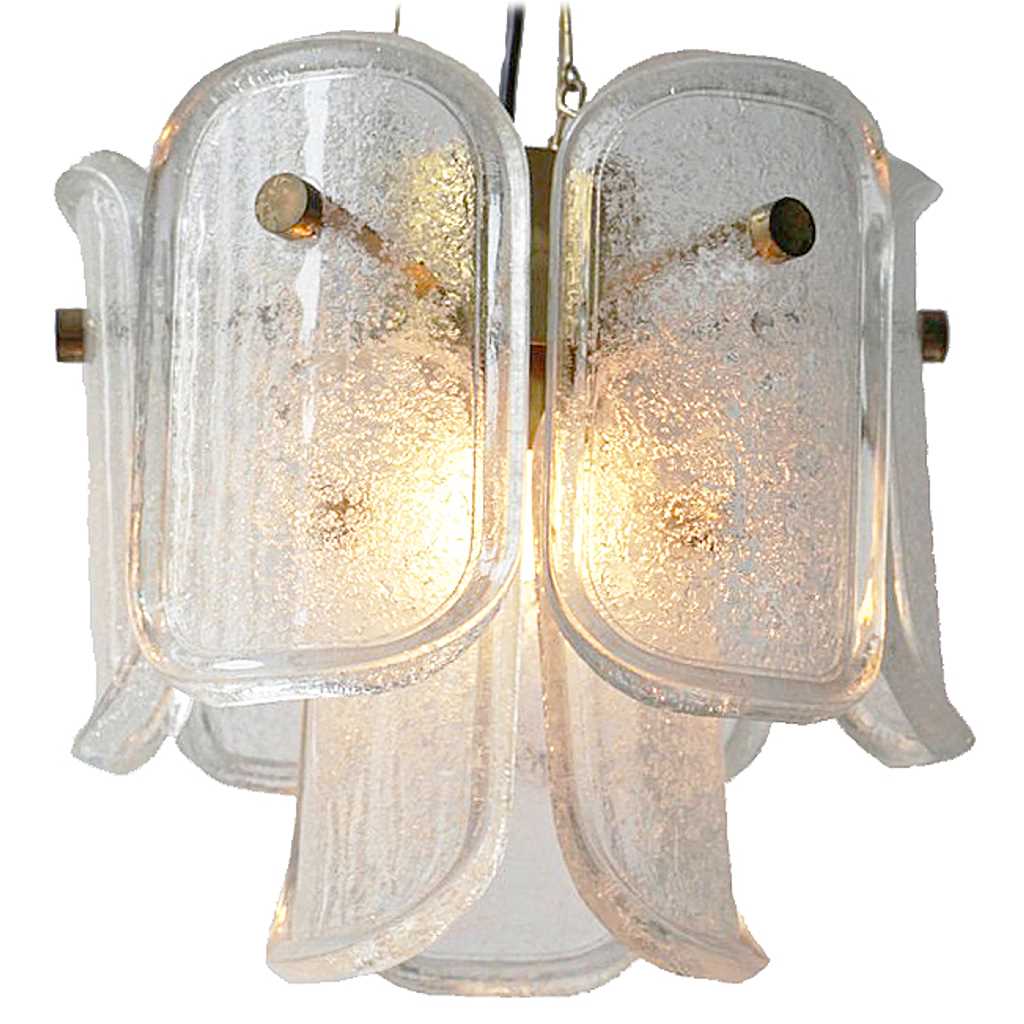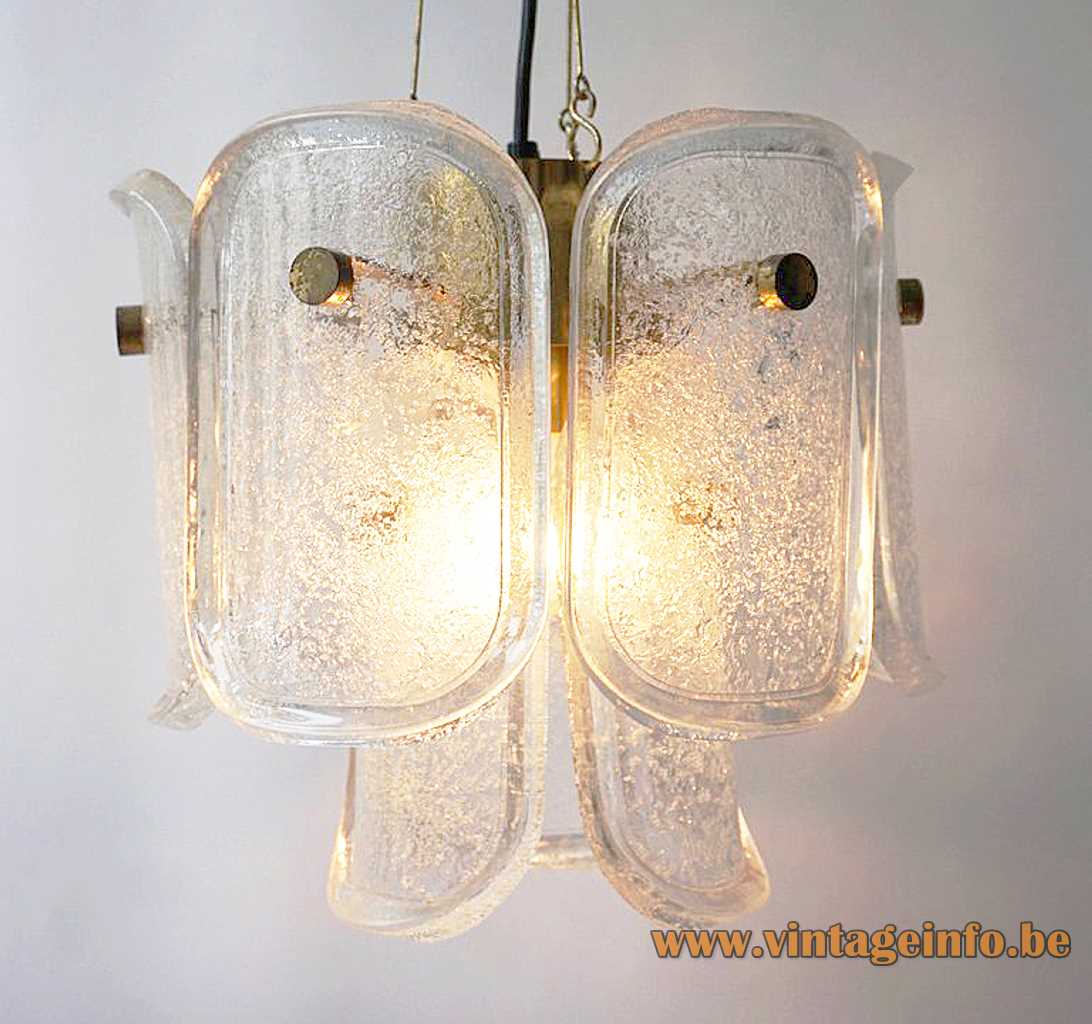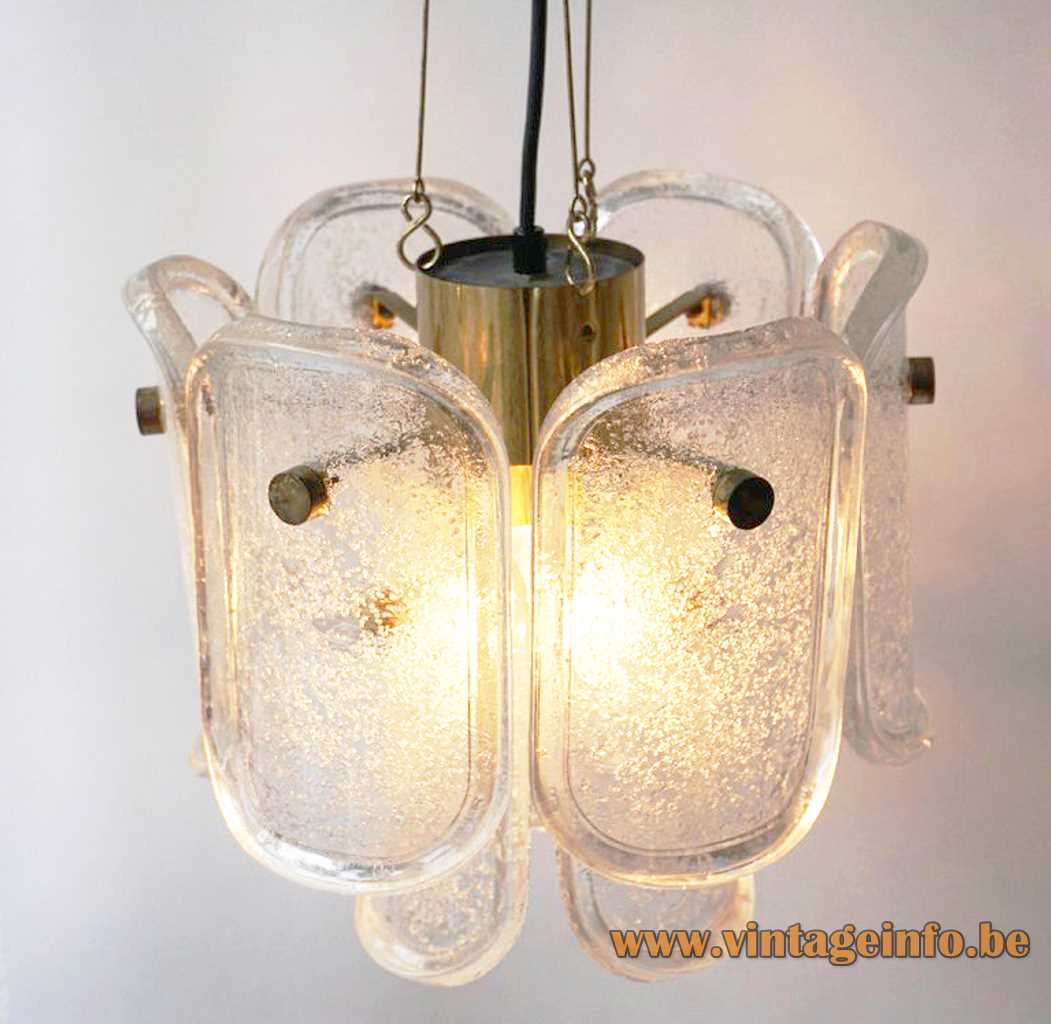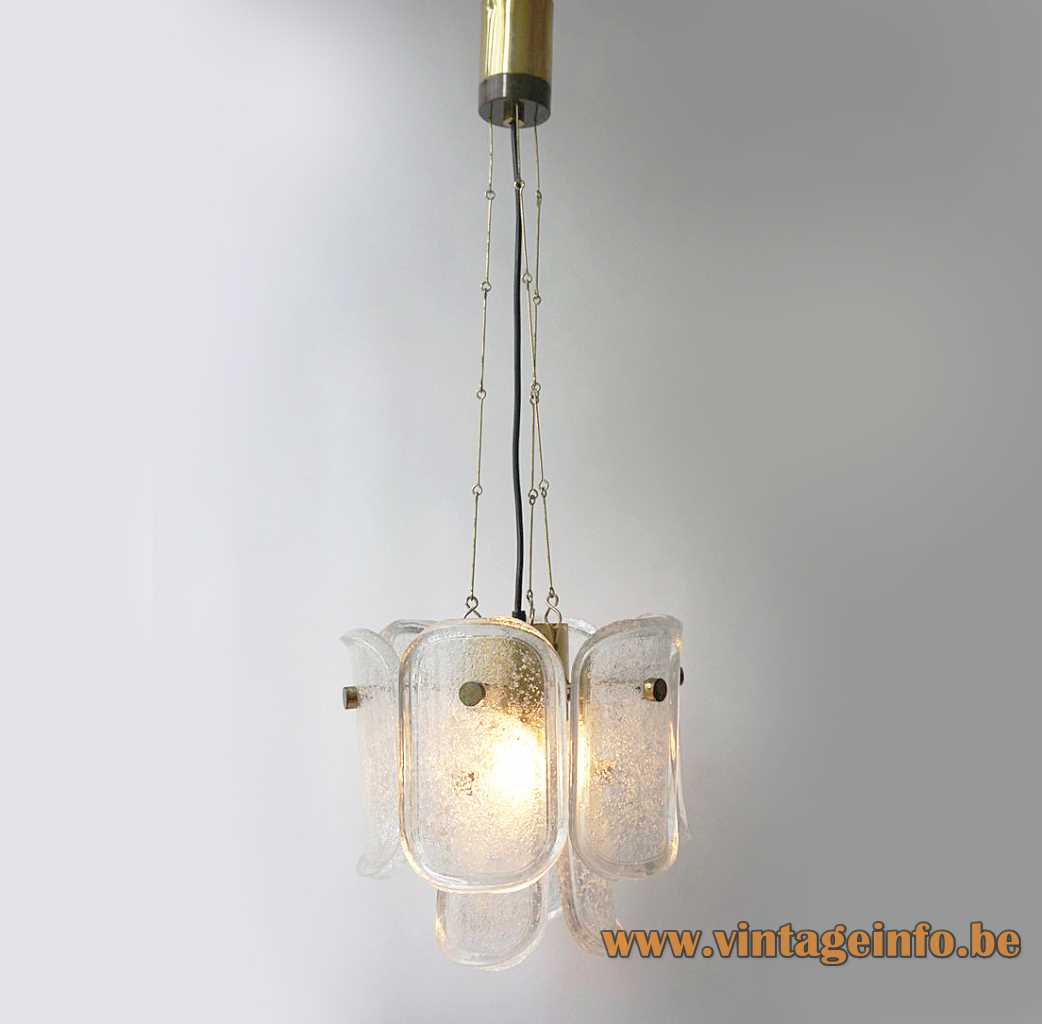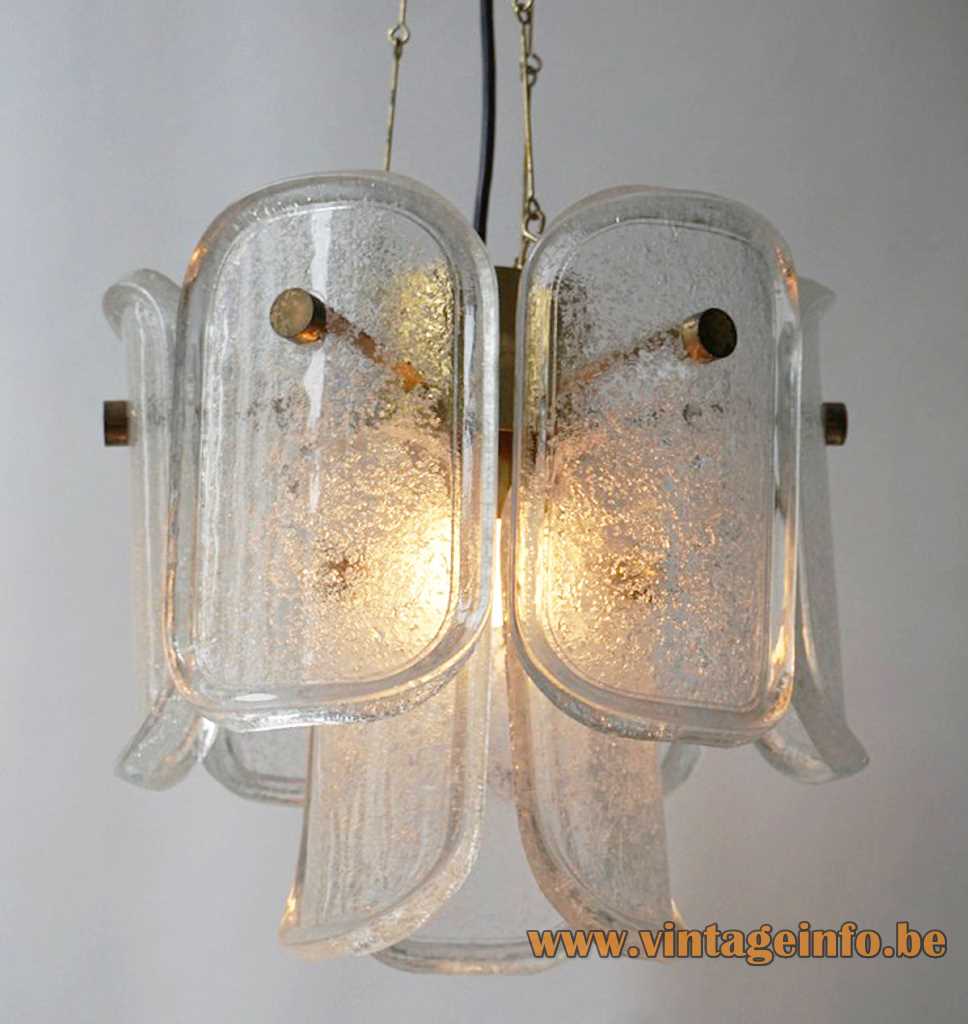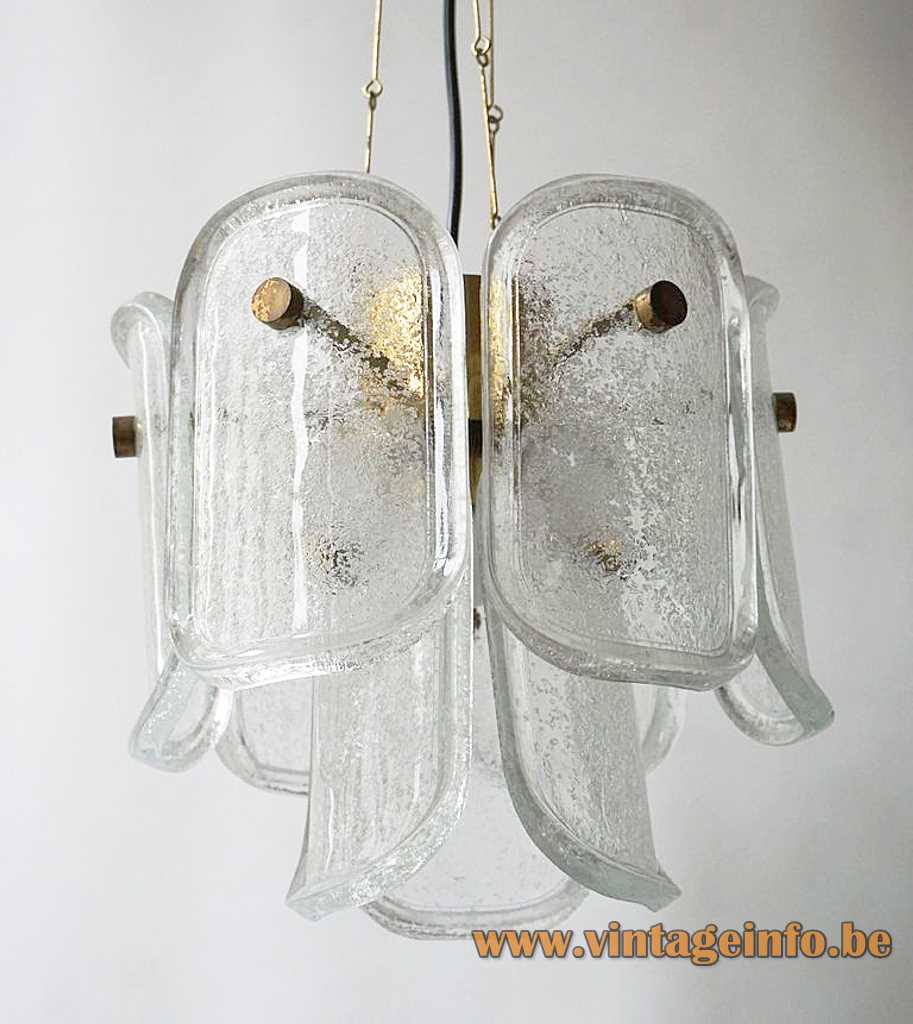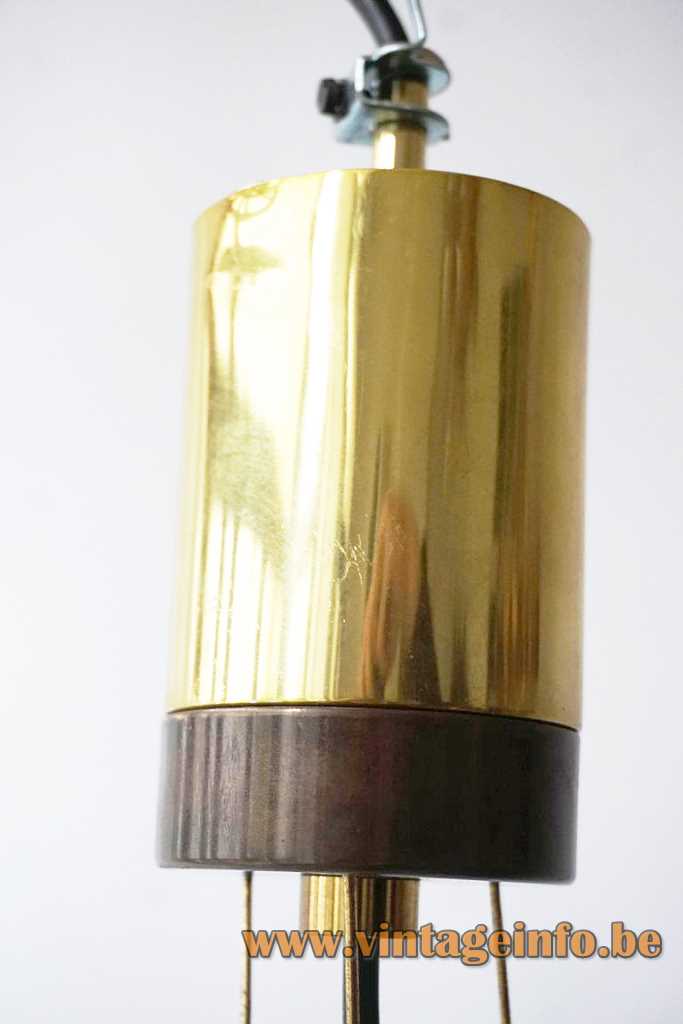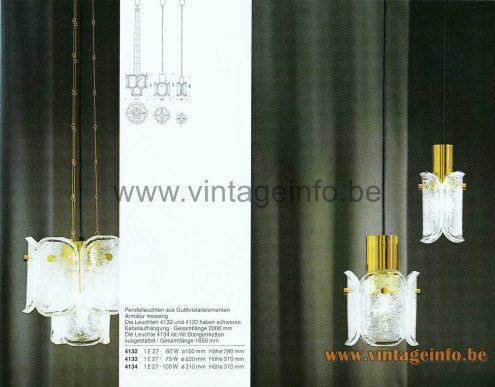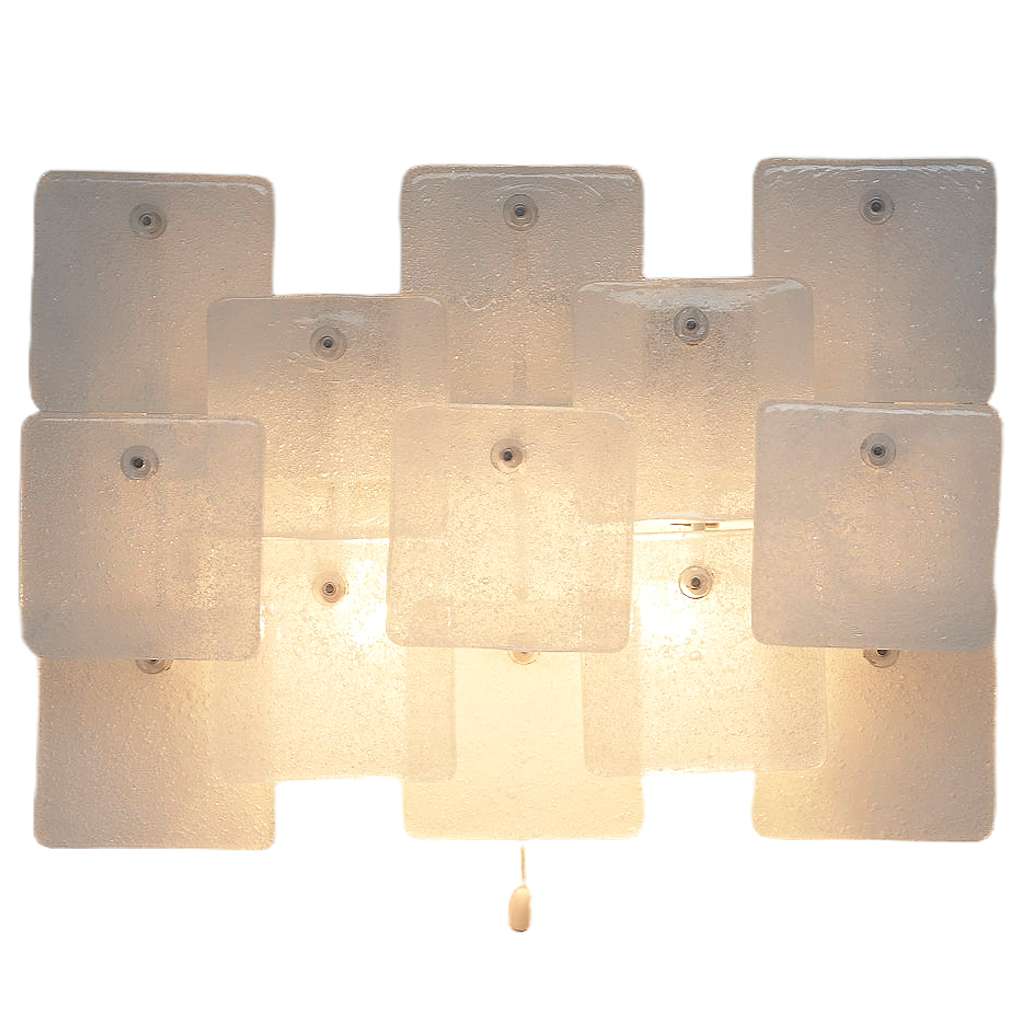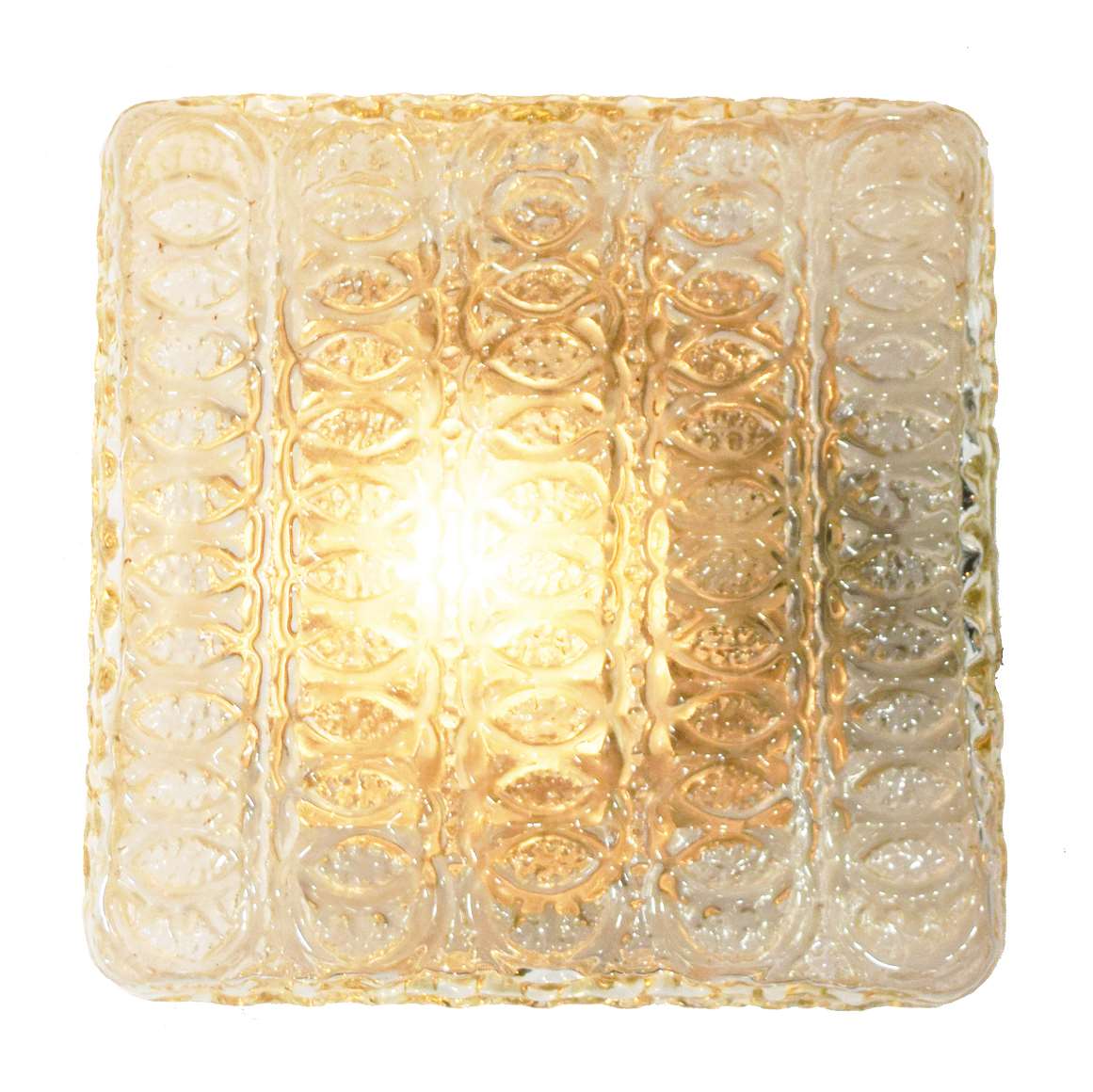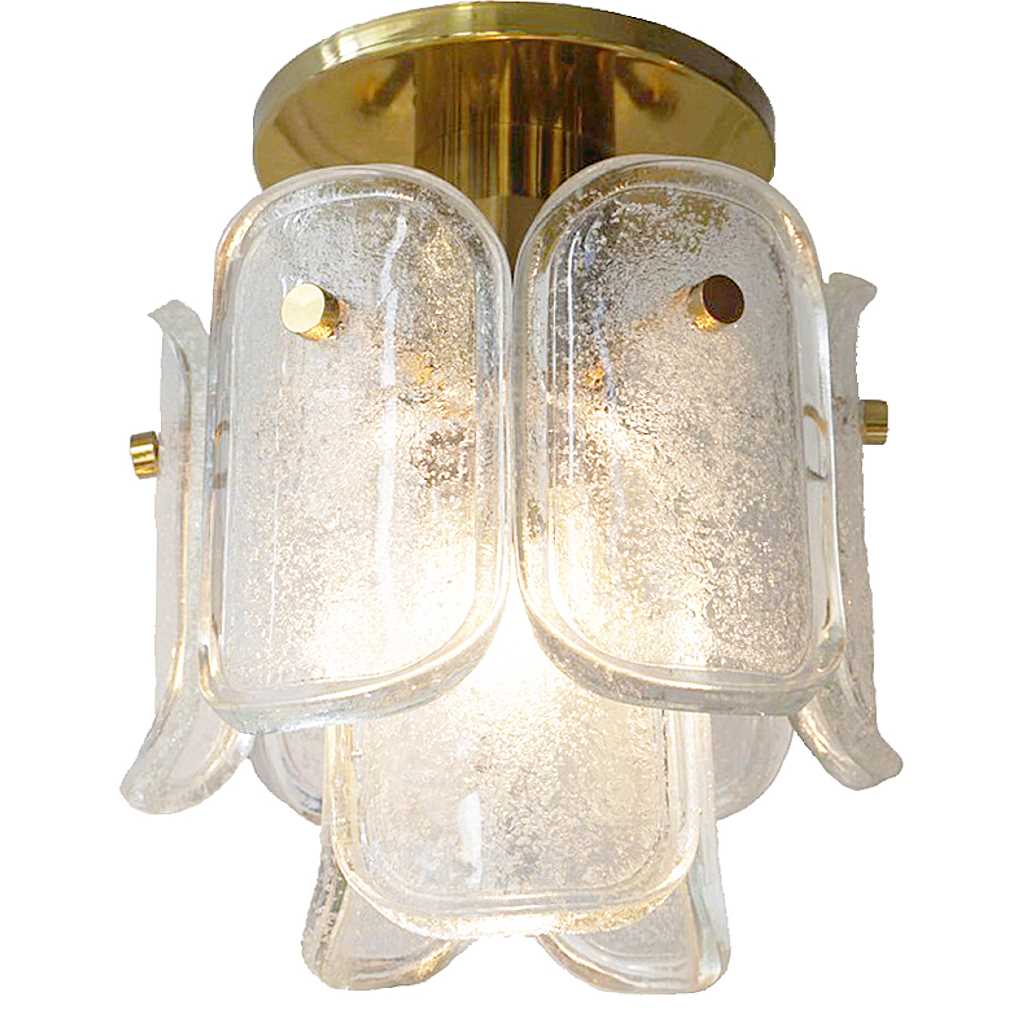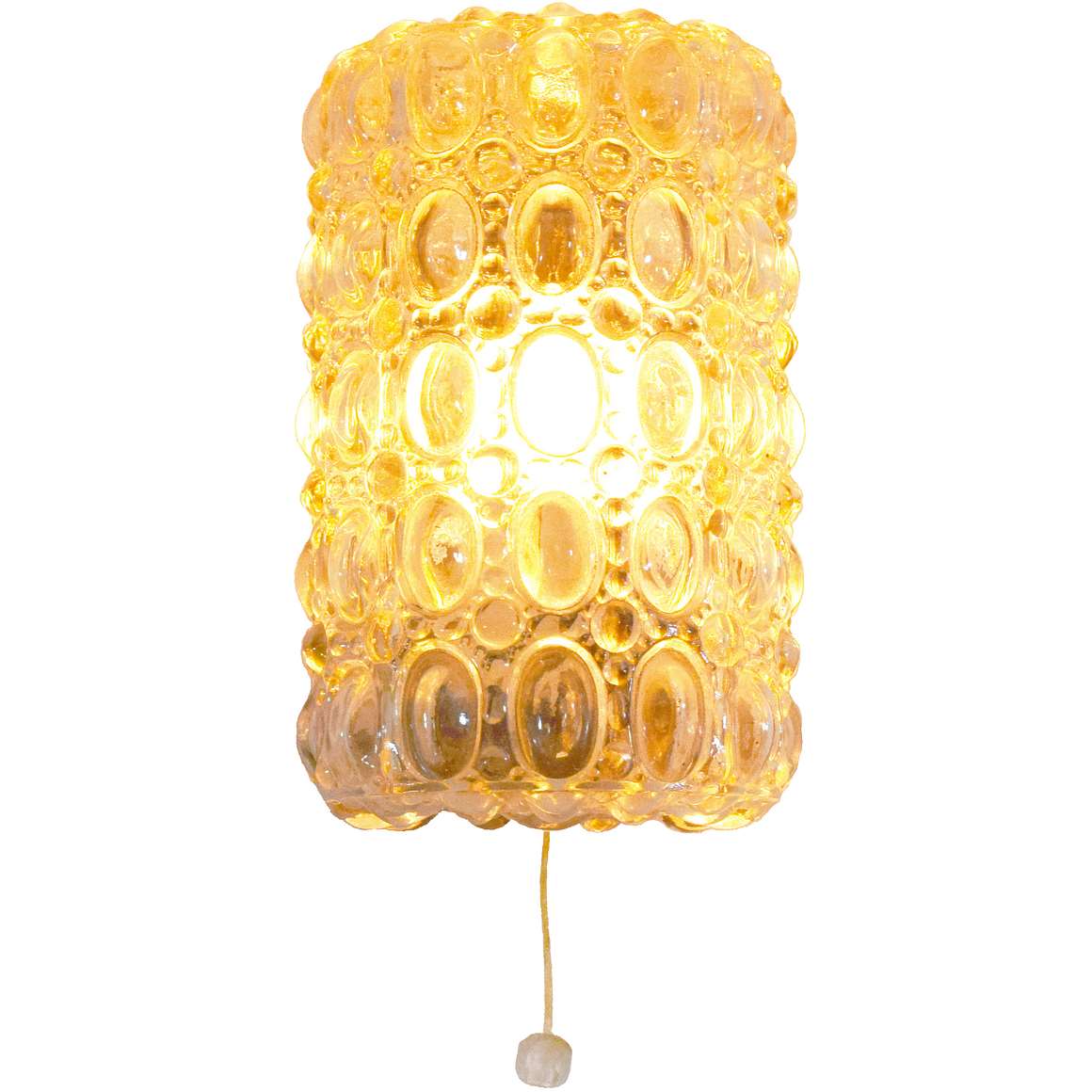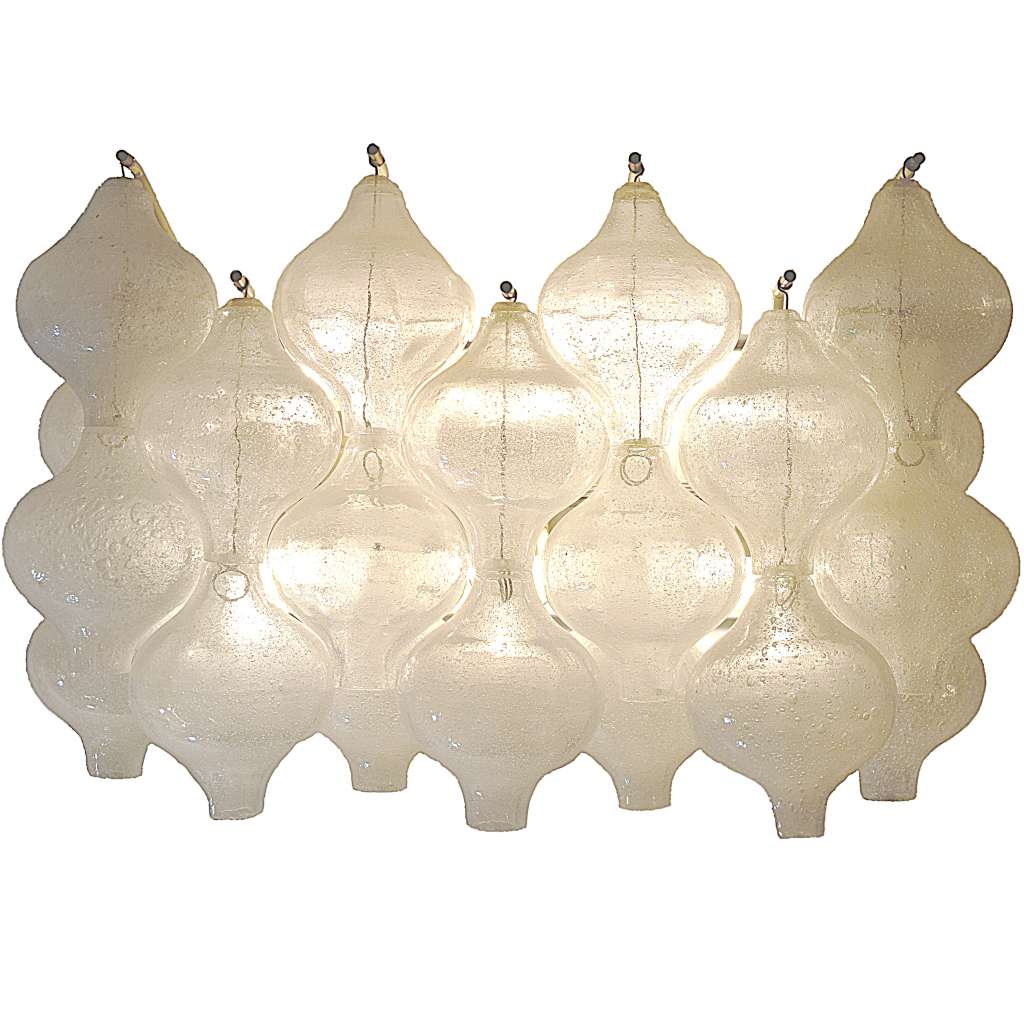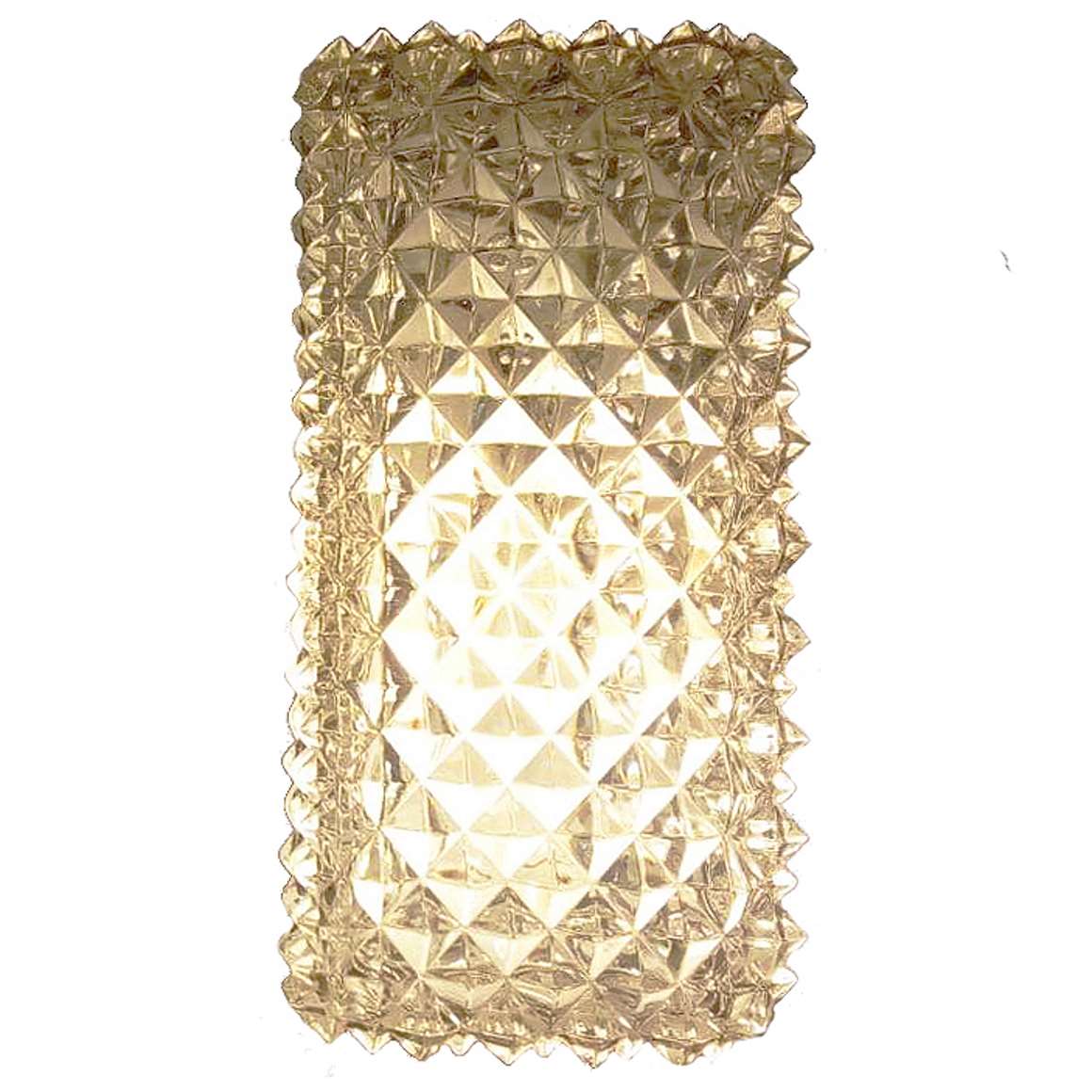Glashütte Limburg Gußkristallpendant lamp – 1979 catalogue picture
Links (external links open in a new window)
Glashütte Limburg manufactures exclusive interior luminaires with natural gas
Helena Tynell – Wikipedia (only in Suomi (2020))
Many thanks to Frank from Flowermountain for the pictures.
Glashütte Limburg Gußkristall Pendant Lamp
Materials: Polished brass rod and tubes. 9 curved cast crystal oval bubble glass discs (pulegoso) lampshade. 3 thin brass interlocked chains. Round brass ornamental screws. Round brass canopy. Bakelite E27 socket.
Cord Length: 60 cm / 23.62”
Height: 30 cm / 11.81”
Width: ∅ 33 cm / 12.99”
Electricity: 1 bulb E27, 1 x 75 watt maximum, 110/220 volt.
Any type of light bulb can be used, but a clear light bulb is preferred.
Period: 1970s, 1980s.
Designer: To be appraised.
Manufacturer: Glashütte Limburg, Glashüttenweg 1, 65549 Limburg an der Lahn, Germany.
Other versions: This Glashütte Limburg Gußkristall pendant lamp exists in several variations. Also made as a flush mount, chandelier, several different models and wall lamps. They are named Gußkristall in the 1979 – 1980 catalogue. Gußkristall = cast crystal.
Often said that these lamps are made by the Austrian company Kalmar Franken KG. They are not, of course.
Glashütte Limburg
Glashütte Limburg was founded in 1946. Today Glashütte Limburg is a member of the Bega group. The company still exists and they make beautiful (industrial) lighting. The name Glashütte Limburg is no longer in use since 2017. Bega was founded in 1945 by goldsmith and steel engraver Heinrich Gartenbrink.
Often said that Helena Tynell designed these lamps together with Heinrich-Johannes Gantenbrink, but he and his family are the owners of the Glashütte Limburg company.
Helena Tynell
Hellin Helena Tynell, born as Helena Turpeinen on December 10, 1918 in Äänekoski, Finland. She died January 18, 2016 in Tuusula, also in Finland.
Tynell graduated in 1943 from the Central School of Arts and Crafts (Taideteollisuuskeskuskoulu) in Helsinki.
Between 1943 and 1946 she worked with ceramics design in Arabia Oy.
Parallel to this, and until 1953, she also worked with lighting at Taito Oy. Between 1946 and 1976, Tynell was one of the most influential designers in the Riihimäki Lasi – Riihimaen Lasi Oy glass factory.
Tynell also freelanced for companies as Flygsfors glassworks, Bega Leuchten and Glashütte Limburg both in Germany and Fostoria Glass in the United States.
She was married to famous designer Paavo Tynell (1890-1973). He was the co founder of Oy Taito AB. He worked with Alvar Aalto in designing furnishings and lighting. Almost all the catalogues of his famous lamps can be consulted on Vintageinfo.
Pulegoso
Pulegoso is an Italian word. It is taken from the dialect word pulega, which means bubble. The glass contains numerous bubbles of all sizes. Produced by adding bicarbonate/soda, gasoline, or some other substances to the glass. Many bubbles make the glass semi-opaque and it gives the surface an irregular texture. The technique was developed in the 1920s by Napoleone Martinuzzi (1892-1977) on the island of Murano, Italy and used for the first time by the famous Venini company.
